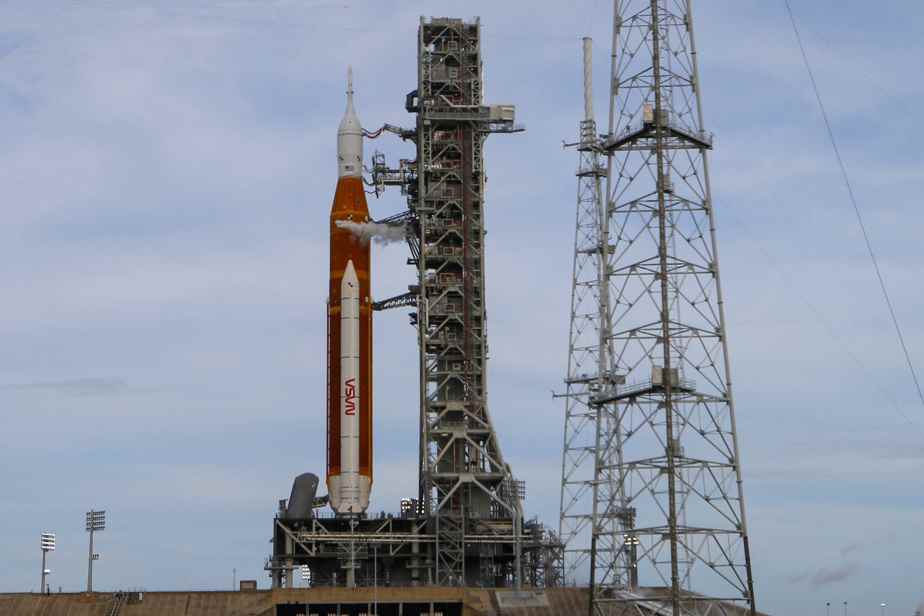(Cape Canaveral) The launch of the Artemis rocket to the Moon was canceled on Monday due to a technical problem, NASA announced.
Posted at 6:35 a.m.
Updated at 7:56 am
A fuel leak discovered during final preparations forced NASA to postpone the launch – scheduled for 8:33 a.m. – by NASA of its new moon rocket on Monday morning.
As precious minutes passed, NASA repeatedly stopped and restarted refueling of the Space Launch System (SLS) rocket due to a leak.
Launch controllers aborted the refueling operation, which was already an hour late due to thunderstorms off Kennedy Space Center. They slowly resumed the process to see if the hydrogen leak could get any worse, which would almost certainly end the countdown, but the alarms forced another pause.
Later that morning, NASA officials feared they had spotted a possible crack or other failure. But it looks like it was an accumulation of frost.
The 98-meter-tall rocket is the most powerful NASA has ever built, surpassing even the Saturn V rocket that carried astronauts to the moon half a century ago.
This test flight, if successful, would put a crew capsule into lunar orbit for the first time in 50 years.

PHOTO JOE SKIPPER, REUTERS
No astronaut was inside the Orion capsule atop the rocket. Instead, three test dummies have been strapped down for the lunar orbit mission, which is expected to last six weeks.
Even with no one on board, thousands crowded the coast to watch the rocket soar.
Hydrogen fuel leaks marred NASA’s countdown test in April, prompting a slew of repairs. The test was repeated with more success in June, but again there were leaks.
This first flight of the lunar exploration program of 21e century of NASA, named Artemis, has been expected for years. Repeated delays have resulted in billions of dollars in budget overruns.
This mission alone costs 4.1 billion US.
Assuming the test goes well, astronauts would board for the second flight and fly around the moon and back as soon as 2024. A two-person lunar landing could follow by the end of 2025. NASA is aiming for the south pole of the moon.
Twelve astronauts from various Apollo missions landed on the moon from 1969 to 1972, with stays of only a few days. NASA seeks to establish a lunar base during Artemis, with astronauts in and out for weeks at a time.
The next stage would be Mars, possibly in the late 2030s or early 2040s.
